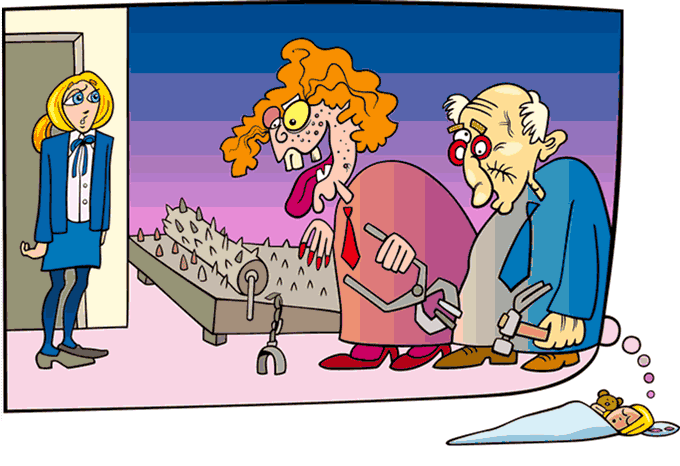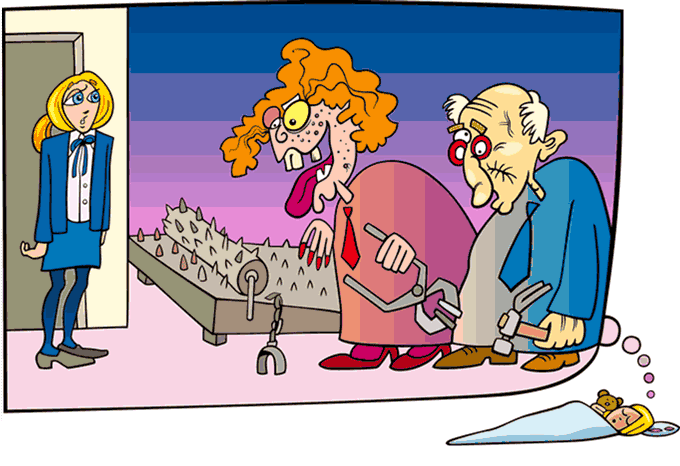
Remember appearing for exams as a kid?
I still break into cold sweats sometimes – recurring nightmares of showing up really late, navigating through endless hallways searching for the exam room. I enter, as everyone is engrossed scribbling sentence after sentence, filling sheet after sheet. I shuffle through the paper trying to find a couple of questions to quickly answer – but wait, why is this Math; wasn’t today History day?
Stressful times, I guess. But, it never really happened. Not in school, at least.
In college, the nightmares came true. Not having prepared for the exam at all, a pen borrowed from your buddy just outside the hall, getting in, sitting there seeing everyone else write, and finally giving up and leaving.
The difference was just the degree of responsibility.
In school, there was a whole process. You prepared at least some time ahead (whether you were self-motivated, your parents made you, you were engaging in healthy competition with friends, or just because you wanted to prove a point to that cocky classmate), even revised the syllabus, and if nothing else, at least showed up with 2 sets of pens, neatly sharpened pencils and a new geometry box.
During college the whole routine fell apart. Until the day of the exam of course, when you sat all night, trying to cram everything in, and promising yourself that next semester would be different. You would study, get the routine back, be responsible.
This sense of self-scorn and motivation lasted till the exams ended, and you were back to ground zero.
Not preparing, not caring, till the next round of exams crept up.
But, what has this juvenile nightmare got to do with LinkedIn advertising?
Well, it brought me the most important realization that has helped me fix my paid campaigns across all channels – most importantly Google Adwords and LinkedIn Ads.
I was running my campaigns on auto-pilot mode
In college, I was operating on auto-pilot.
But, I have run my fair share of campaigns in the freewheeling college mode as well – setting the campaign up, and letting it run, without monitoring it very closely. Many of you would be able to relate, and I know that it’s unintentional. Marketers have a lot to do, and urgent generally gets higher priority over important.
Result – you keep putting off analyzing your campaigns, till you finally squeeze in the time, and realize you could have generated so many more leads, at much lesser cost.
Every time that happens, I am reminded of my waking nightmares that were college exams, accompanied with the resolve – I’d monitor the campaigns better this week.
In fact, in our very first tryst with LinkedIn ads, I gave up after a few weeks – money was just getting wasted, without generating a lot of leads. But, it was largely our fault. We weren’t monitoring the ads well.
It was only after we went back to the school way of obsessively organizing every single detail in the campaign, analyzing every click, and every conversion, or non-conversion regularly that we started getting better results.
The point here: Treat your paid campaigns like you treated the exams back in school – with a strong sense of responsibility. Superficially fixing a few aspects every month or so would just burn a hole in your pocket.
It’s the same with every other paid campaign that you run, but with LinkedIn, there’s more at stake, and there are certain very obvious flaws, which calls for paying more attention to your campaigns
Problems with LinkedIn Ads
- The clicks are more expensive (minimum click cost is 100 Rs. Or 2$)
- There is no conversion tracking (unlike Adwords, Facebook or Twitter) – so it’s your job to track conversions as well
- The quality score is measured, but the way it is measured is primitive and considers only all-time CTR and bid as the contributing factors. So, there is no real incentive for advertisers creating great ads.
- There is no concept of custom audience or a retargeting list, so the best you can do is choose the targeting wisely, and keep on rotating the targeting options and the ads every two weeks so that the ads don’t keep on showing to the same set of audience. In Adwords, your remarketing list keeps on growing, so your audience grows as well. But without that, LinkedIn ads just get stale very quickly.
So, yes there are limitations, but it’s definitely worth giving a shot for B2B businesses because you can generate leads that are really high-quality.
So, identify the metrics that matter, and from day 1 monitor them closely. Here’s the checklist to get you started in the right direction.
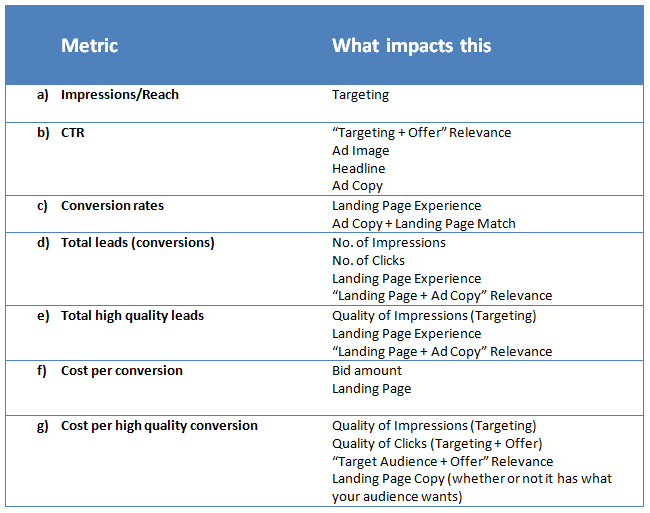
Anyhow, since we geeked up on our campaigns, we have identified a few things that helped us get better results from our campaigns, and might help you too.
How I got better results with my LinkedIn Ads
1. Question type headlines worked the best for me
Like anything else, you would need to test this as well, but in the several ad copies that we ran, question headlines always got better CTR than the other variations. One particular ad that we ran targeting education industries for LeadSquared got us 25.3% higher click through rate than the other versions. The headline used a question format here.

Using the same rationale, we ran our other industry-specific ads also with similar variations of headlines. We noticed that for travel ad campaigns, we got 55.35% higher CTR than the other variants.
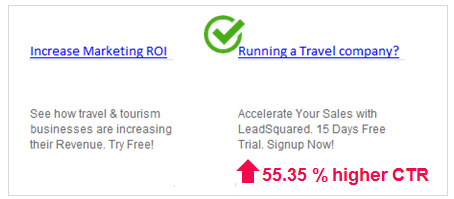
Having said that, you should try non-question type variants as well, but very clearly calling out to your target audience, or using keywords they would easily identify with.
2. Target well: Targeting might be limited, but it’s accurate
LinkedIn advertising has the advantage of being a professional network, over other social media platforms. Professionals are looking to connect with other like-minded professionals or looking for potential opportunities. So, they fill out their professional details much better than they would on Facebook.
Result – the targeting on LinkedIn would be really accurate compared to all the other platforms.
It has great targeting option that allows you to target people by seniority, their job titles etc.
To-do
Look into your existing customer profile, and assess who are the people buying from you the most – are they managers, are they sales professionals etc. and you would be able to target well.
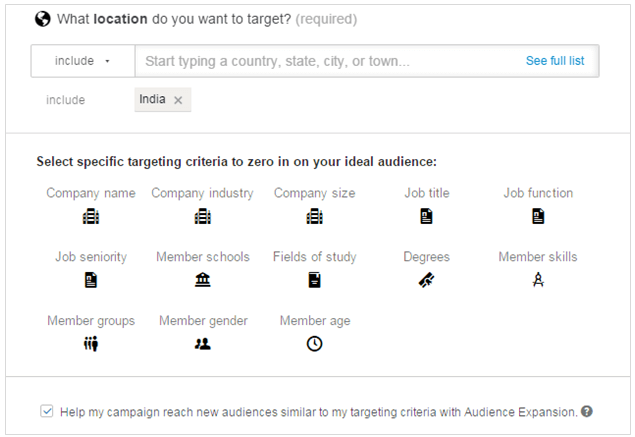
3. Add LinkedIn groups also to the targeting option
LinkedIn allows targeting based on the groups your audience is in as well. So, you can make a list of all the groups relevant to your target audience, and target people based on that.
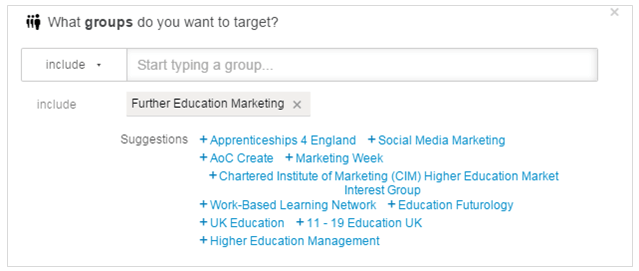
4. Suppress your competitors & customers from seeing your ads
LinkedIn targeting allows you to save a lot of clicks by suppressing your competitors and your customers from seeing the ad.
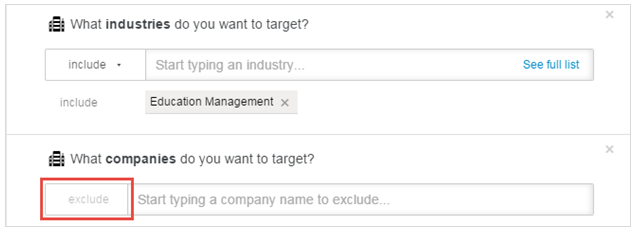
5. Using bright images got much better CTR than other variants
One ad of ours that outperformed everyone else was a real estate e-book ad. Though the offer itself was more appealing (free e-book) than free trial of software, we ran several different image versions.
The version that worked the best was a bright pink image of a download button (the downwards arrow). This outperformed the e-book image and everything else that we used.

So, use shocking colors, and let the image complement your ad, because the image is really very small (50*50px)
6. Use landing pages
Now, we have one thing established – LinkedIn clicks are expensive, and clicks not easy to get either. So, when you do manage to get the clicks, don’t waste them. Use landing pages to capture your leads, with a strong offer. E-books and webinars is what have got us the best conversions so far.
You might have already heard about Facebook’s lead ads. One interesting thing to note is, LinkedIn used to have a one click advertising option as well, in which you would get notified in case someone expressed an interest in your ad. It’s curious why LinkedIn retired it, but they did. It might be time they’d think about bringing it back, given how less the revenue LinkedIn is making from its advertising options is.
7. The holy grail – analysis and improvement
The platform itself might have a lot of flaws, but the reports have some insights that can help you to make some serious improvements. As you can see in the image below, we can see the industries, job roles, size of the company etc. of the people who are engaging with our ads.
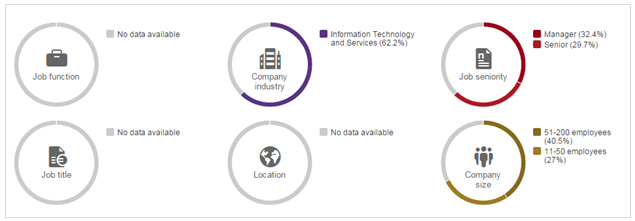
Now, if you look at these reports regularly, you can easily identify if you are showing up in segments you don’t want to target. You can modify your campaigns after that by excluding those segments. But, you’ll do this only if you keep vigil, and not fall back to the comfort of letting your ads run on auto-pilot.
So, yes, these are a few things that can help you tweak your LinkedIn campaigns a little.
I would close this by adding there are quite a few things marketers expect from LinkedIn ads, and adding these would encourage businesses to invest more on them.
What marketers expect from LinkedIn Ad Platform
- Conversion pixel – An advertising platform with no conversion tracking is very odd. They would make the campaign analysis easier for marketers by adding this option, and would increase the usability of their reports as well.
- Remarketing – When advertisers are not even able to retarget the people who left the site without converting, they would see far less value in LinkedIn ads. The clicks are expensive, so there should be some potential benefit from these unconverted clicks as well.
- List based targeting – It’s on all the platforms now – Google, Facebook and Twitter, so this would be much appreciated.
- Bring the one-click ads back, or better yet, create Facebook leads like option
There are many other things, but addressing these issues would be a good way to start. All right, I’ll keep these back-to-school PPC campaign posts coming, and would follow up with details of how you can fix your other campaigns next – Adwords most importantly. So, stay tuned.





